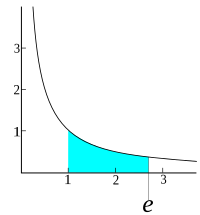
Photo from wikipedia
There is a growing recognition of the significance of unique morphological and physiological adaptation of native warm-season grasses (NWSG) of North America as summer forage resources and major grassland ecosystem… Click to show full abstract
There is a growing recognition of the significance of unique morphological and physiological adaptation of native warm-season grasses (NWSG) of North America as summer forage resources and major grassland ecosystem components. Defoliation management plays a major role in ensuring eco-friendly utilization of grassland natural resources. To assess sward structural responses of big bluestem (BB, Andropogon gerardii Vitman), eastern gamagrass (GG, Tripsacum dactyloides L.), indiangrass (IG, Sorghastrum nutans L. Nash), and switchgrass (SG, Panicum virgatum L.) stands to seasonal changes in harvest regimes, a five-year forage harvesting trial was conducted, in a randomized complete block design, at Virginia State University’s research farm. Vegetation structural response attributes (sward-height, canopy closure, stand density and basal cover) of newly established the NWSG stands to second year changes in harvest regimes were monitored. In 2013, 64 plots of year-old stands of transplanted BB, GG, IG, and SG separated by ≥120-cm alleys were cut once in early-August and mid-November to suppress weeds and promote tillering. Starting June 2014, each plot had three 1.5-m wide side-by-side harvest-strips cut once-, twice-, or thrice year−1 (frequencies) ending mid-Oct for four consecutive years followed by a single mid-summer harvest in 26 June 2018, using a forage plot-harvester. In 2015, harvest frequencies for the three- and single-cut strips, in plots 32–64, were switched/flipped once and never reverted. Data was recorded on four early-summer and late-fall sward heights, from each strip at 60-cm intervals before the first and the last harvest, each year. early-spring basal- and canopy-diameter, for mid-April 2015 and 2016, concurrent early-spring canopy light interception, using the LI-191 Line Quantum Sensor, and season-end visual obstruction heights, for stand density in 2016 and 2017. All regrowth sward-heights showed effects of harvest frequency and exhibited compensatory structural responses to the change in harvest regimes. Basal and canopy diameters tended to be greater for the single-cut strips that were previously cut thrice.
Journal Title: Agronomy
Year Published: 2023
Link to full text (if available)
Share on Social Media: Sign Up to like & get
recommendations!